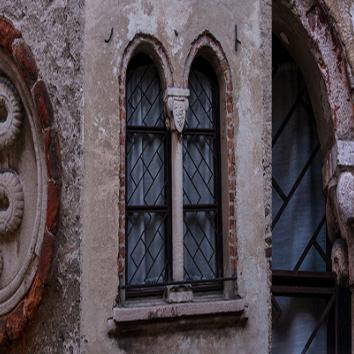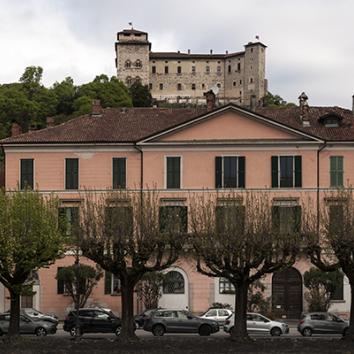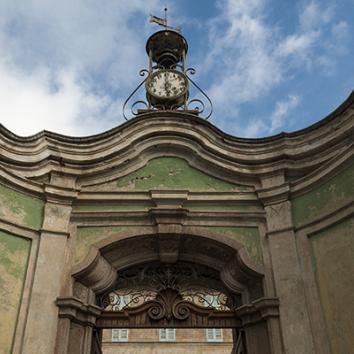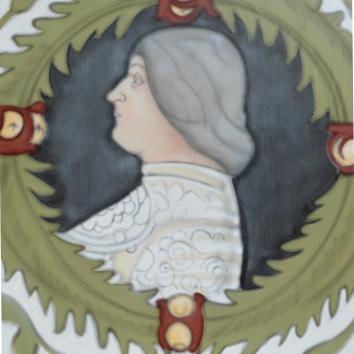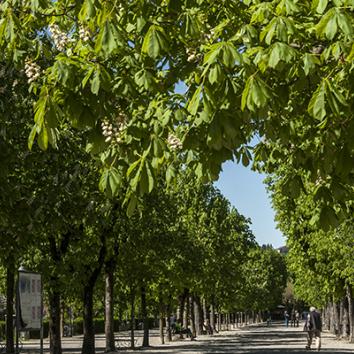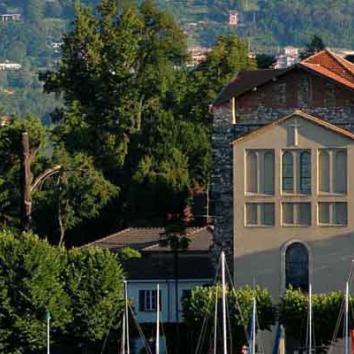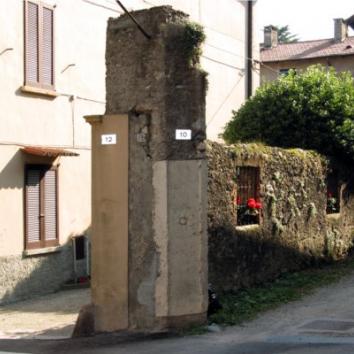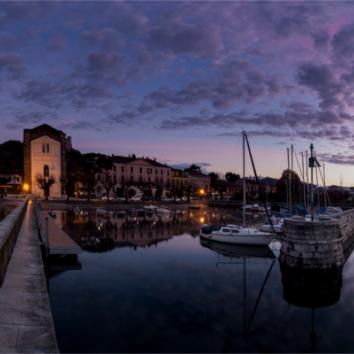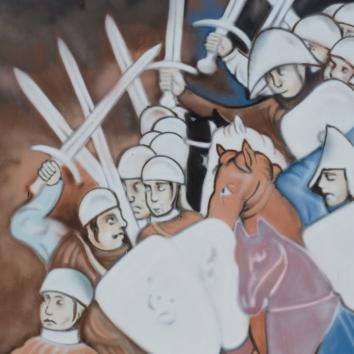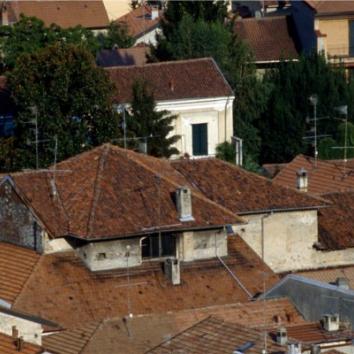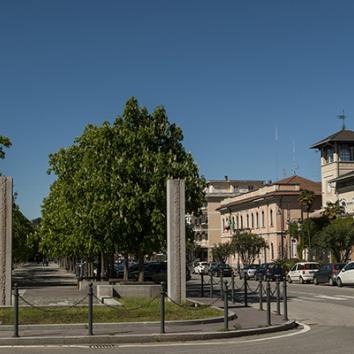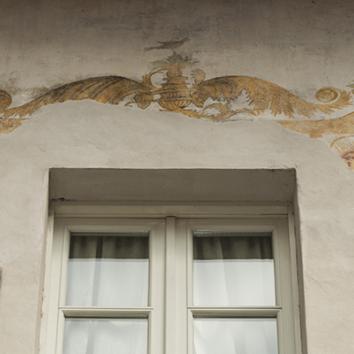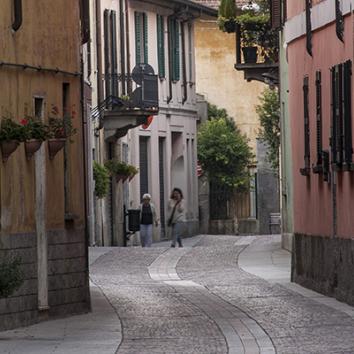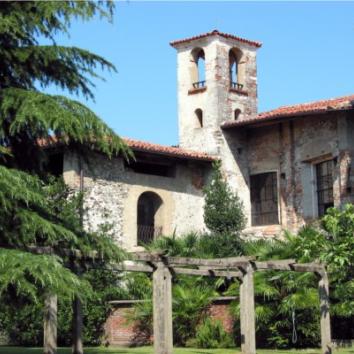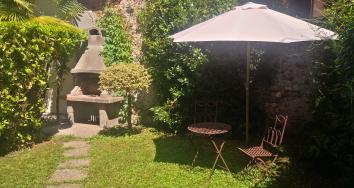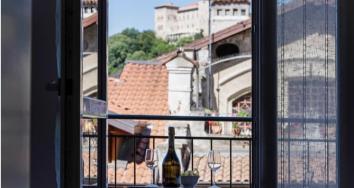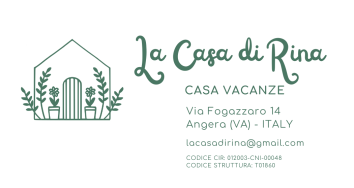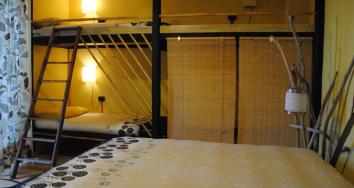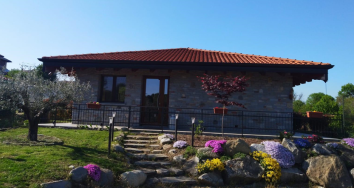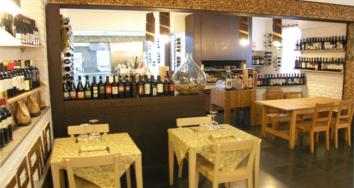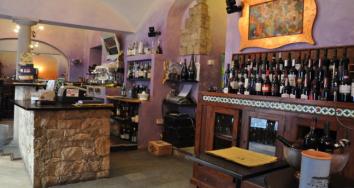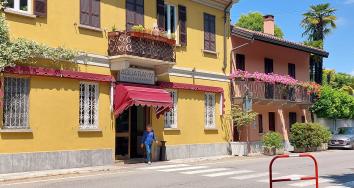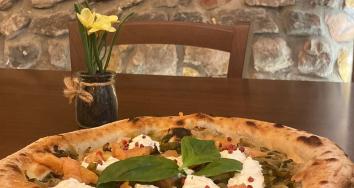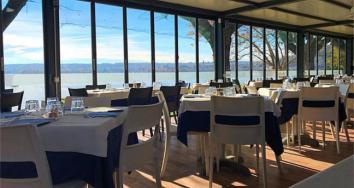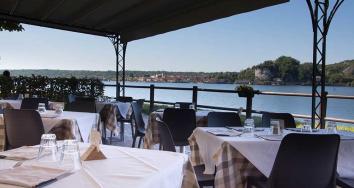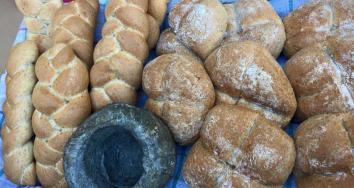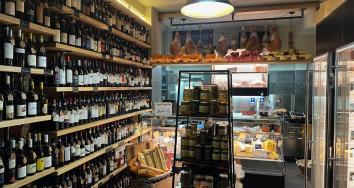St. Anthony The Great (by Andrea Ravo Mattoni)
Sito n.52 Museo Diffuso
Painting showing the face St Anthony. Andrea Ravo Mattoni, 2019, spray paint on PVC canvas, 2 x 1.5 m. The original work belongs to the parish and is not open to the public; it comes from the church of Sant’Antonio Abate, which was in Via Paletta but was deconsecrated and partly demolished in the latter half of the 19th century; today all that is visible from the street of the church is a door jamb in Angera stone with a floral decoration. This patron saint of livestock epidemics and infectious human diseases was especially important to farmers, as evidenced by the numerous Masses, livestock blessings and processions to the stables recorded in the chapter diaries of the Parish of Angera, studied by Luciano Besozzi. The main festival was celebrated on January 17th. Saint Anthony was born in the 3rd century in Egypt to a wealthy Christian family; from a young age he lived the desert and dedicated his life to prayer. An expert in medicines and also remedies against the Devil, he attracted many followers and was renowned for the spiritual powers that enabled him to cure terrible diseases. His disciples later founded the order of the Hospitaller Monks of St Anthony and soon became known for their ability to cure numerous illnesses, in particular Saint Anthony's fire. To soothe the pains caused by herpes, they treated the patients with ointments made from pork fat. The pigs raised for hospitals wore a bell to identify them and were not to be mistreated. This led to the medieval tradition that Anthony was the protector of pigs, and then all domestic animals. The original Angera painting shows the elderly saint standing, with a long white beard and halo, dressed in a dark tunic fastened by a belt from which hang a rosary, cloak and sandals. His right hand is open and upturned, while in his left hand he holds the book of the Holy Scriptures from which a flame emerges, probably a reference to Saint Anthony's fire. At his feet there are two oxen instead of the more usual pig - but different animals were often shown, especially in zones such as Angera where mainly cattle were raised. The background is a hilly landscape with trees. See Angera Open-Air Museum Site 48 - www.angera.it



